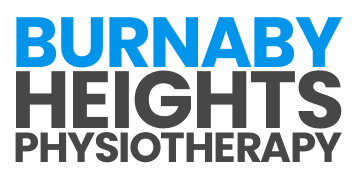
Targeted Treatment and Recovery: How Physiotherapy Helps Tennis Elbow
August 27, 2024
Targeted Care for Pain Relief: Discover When Physiotherapy Can Help
September 27, 2024Physiotherapy is a versatile and highly effective form of treatment that can help individuals recover from injuries, manage chronic conditions, improve mobility, and prevent future health issues. But when is the right time to see a physiotherapist? Whether you’re recovering from surgery, managing a sports injury, or dealing with chronic pain, understanding the key signs can help you determine when it’s time to seek professional help. In this blog, we’ll explore the main benefits of physiotherapy, common techniques used by physiotherapists, and how people of all ages can benefit from these treatments.
How Does Physiotherapy Benefit Health and Well-Being?
Physiotherapy offers a wide range of benefits for individuals dealing with pain, injury, or limited mobility. Here are some of the key advantages:
- Pain Relief: Physiotherapy treatments, such as manual therapy, therapeutic exercises, and modalities like shockwave therapy, are designed to target the source of pain, whether it’s due to injury or a chronic condition like arthritis. By reducing pain and inflammation, physiotherapy can improve your quality of life.
- Improved Mobility and Flexibility: Physiotherapy helps restore movement and flexibility by focusing on joint mobilization and muscle strengthening. This is especially important for individuals recovering from surgery or an injury that has affected their range of motion.
- Prevention of Future Injuries: A well-structured physiotherapy program can help you prevent future injuries by improving your balance, posture, and overall muscle strength. This is particularly beneficial for athletes or individuals who are physically active and prone to repetitive strain injuries.
- Faster Recovery from Injury: Whether you’ve sustained a sprain, fracture, or muscle tear, physiotherapy can accelerate the healing process by targeting the affected area with specific exercises and treatments. The sooner you begin physiotherapy after an injury, the better your chances of a full and quick recovery.
- Chronic Condition Management: Physiotherapy is highly effective in managing chronic conditions such as back pain, neck pain, and osteoarthritis. With regular sessions, individuals with chronic conditions can experience reduced symptoms, better mobility, and an overall improved quality of life.
What Are the Most Beneficial Physiotherapy Techniques?
Physiotherapists use a variety of techniques to tailor treatments to the specific needs of each individual. Here are some of the most effective and commonly used physiotherapy techniques:
- Manual Therapy: This hands-on approach involves techniques like soft tissue massage and joint mobilization to improve movement, reduce stiffness, and relieve pain. It’s commonly used for conditions affecting the muscles and joints.
- Exercise Prescription: Therapeutic exercises are at the core of physiotherapy treatment. These exercises focus on building strength, flexibility, and endurance, which helps the body recover from injury and prevent future issues.
- Electrotherapy: electrophysiological modalities such as: ultrasound, interferential current, and electrical muscle stimulation are used to help reduce pain, improve tissue healing, and restore function. It is used for musculoskeletal and neuromuscular injuries.
- Shockwave Therapy: This non-invasive treatment uses sound waves to promote healing in damaged tissues, reduce pain, and improve mobility. It’s often used for conditions like plantar fasciitis, tennis elbow, and shoulder injuries.
- Acupuncture: is a needling technique based on insertion needles along meridians mapped on the human body. It is used to reduce pain, promote tissue healing, and improve energy flow in the body. It is used for musculoskeletal and neuromuscular injuries for acute and chronic conditions.
- Dry Needling: Similar to acupuncture, dry needling involves the insertion of thin needles into trigger points or tight areas in muscles. This technique helps release muscle tension and relieve pain.
Each of these techniques is carefully selected based on the individual’s specific condition, ensuring that treatment is both effective and personalized.
Benefits of Physiotherapy for Children and Older Adults
Physiotherapy is a highly adaptable treatment that can benefit individuals of all ages, including children and older adults. For children, physiotherapy plays a crucial role in addressing developmental delays, improving motor skills, and managing conditions such as cerebral palsy or scoliosis. Through tailored exercises and activities, physiotherapists help children enhance their strength, coordination, and balance, enabling them to engage in daily activities with greater ease and confidence. Additionally, physiotherapy supports children recovering from injuries, helping them regain mobility and reduce pain.
Older adults, on the other hand, often face challenges related to aging, such as arthritis, osteoporosis, and reduced mobility. Physiotherapy helps seniors manage chronic pain, improve joint flexibility, and maintain independence by addressing these age-related issues. By focusing on exercises that improve strength, balance, and stability, physiotherapists can reduce the risk of falls and enhance the overall quality of life for older adults. Moreover, physiotherapy can aid in post-surgical recovery, helping seniors regain strength and functionality after procedures like hip or knee replacements.
In both children and older adults, physiotherapy is personalized to meet their unique needs, ensuring that treatment is safe, effective, and age-appropriate.
What Should I Expect from My First Physiotherapy Session?
If it’s your first time seeing a physiotherapist, knowing what to expect can help ease any concerns and ensure you’re prepared for the session. Typically, your first physiotherapy session will involve a comprehensive assessment to understand your condition, medical history, and goals.
- Initial Consultation: The physiotherapist will start by asking about your symptoms, the onset of your condition, and any relevant medical history. They may also ask about your lifestyle, work habits, and physical activities to understand factors that could be affecting your condition.
- Physical Examination: Next, the physiotherapist will perform a physical assessment to evaluate your range of motion, muscle strength, joint flexibility, posture, and movement patterns. This examination helps them identify any imbalances or areas of weakness contributing to your symptoms.
- Treatment Plan: Based on the findings, the physiotherapist will discuss a personalized treatment plan with you. This plan may include hands-on techniques such as manual therapy, joint mobilizations, or soft tissue massage, along with specific exercises to strengthen muscles and improve mobility. The treatment may also involve modalities like shockwave therapy, depending on your condition.
- Education and Advice: Your physiotherapist will guide you on proper posture, movement, and exercises you can perform at home to support your recovery. They may also recommend lifestyle adjustments or modifications to your daily routine to prevent further aggravation of your condition.
By the end of your first session, you should have a clear understanding of your condition, the treatment approach, and the steps needed for recovery.
How Often Should I Attend Physiotherapy Sessions for Optimal Benefits?
The frequency of physiotherapy sessions depends on the individual’s condition and treatment goals. For acute injuries or post-surgical recovery, physiotherapy may start with 2-3 sessions per week. As the individual progresses, the frequency can be reduced to weekly or biweekly sessions.
For chronic conditions like arthritis or long-term pain management, you may benefit from regular maintenance sessions once or twice a month to keep symptoms at bay. Your physiotherapist will assess your condition and recommend a treatment schedule that best fits your needs.
Maximizing the Benefits of Physiotherapy: Recommended Workplace Adjustments
Workplace ergonomics play a significant role in supporting the benefits of physiotherapy, particularly if you spend long hours sitting at a desk or performing repetitive movements. Making simple adjustments in your work environment can help reduce strain on your muscles and joints, prevent injury, and improve your posture.
- Ergonomic Desk Setup: Ensure your desk, chair, and computer are arranged to promote good posture. Your chair should support your lower back, and your feet should be flat on the floor or on a footrest. Keep your computer screen at eye level, so you don’t have to strain your neck, and position your keyboard and mouse so your arms are at a 90-degree angle.
- Frequent Breaks: Sitting for long periods can cause tension in the back, neck, and shoulders. Take regular breaks to stand, stretch, and move around. Even brief moments of movement every hour can alleviate muscle tension and improve circulation.
- Standing Desk Options: If possible, alternate between sitting and standing during your workday by using a standing desk or an adjustable workstation. This can reduce the strain on your lower back and promote better posture throughout the day.
- Posture Awareness: Be mindful of your posture throughout the day. Avoid slouching or hunching over your desk, and try to maintain a neutral spine. Your physiotherapist can recommend specific exercises or stretches that you can perform at work to keep your muscles and joints flexible.
By integrating these workplace adjustments with your physiotherapy treatment, you can help maximize the effectiveness of your recovery and prevent future injuries.
Let Us Help You Recover and Thrive
If you’re experiencing pain, limited mobility, or recovering from an injury, physiotherapy can offer a personalized path to recovery. With its ability to relieve pain, improve flexibility, and prevent future issues, it’s never too early to take charge of your health. Whether you’re a young athlete, an office worker, or a senior dealing with age-related concerns, physiotherapy provides tailored solutions that work for everyone.At Burnaby Heights Physiotherapy, our team is ready to guide you through every step of your recovery. Book your appointment today and start your journey toward a healthier, pain-free future.






